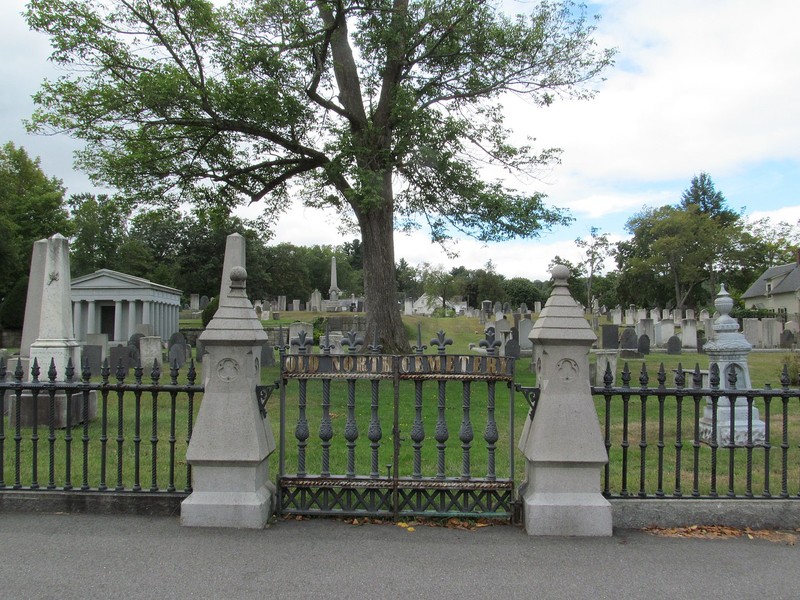Old North Cemetery
Introduction
Text-to-speech Audio
Images
Old North Cemetery (est. 1730) in Concord, NH.

Backstory and Context
Text-to-speech Audio
The City of Concord's Old North Cemetery dates back to 1730 when it was established as the city's first burial ground (the town was known as Penny Cook in 1730). The Old North Cemetary holds many of the Concord's noteworthy citizens, such as President Franklin Pierce, Governors David L. Morril and Matthew Harvey, and Lewis Downing, who founded the Abbot-Downing Company and creator of the Concord Coach. Moreover, with roughly 2,500 plots, the cemetery provides a visual clue into nearly three centuries of Concord history. As well, many of the gravestones, mausoleums, and monuments enjoy architectural significance and enjoy a lengthy history.
- Ephraim Davis (1697-1755) who signed the 1721 "Petition for Penny Cook."
- Rev. Timothy Walker (1704-1782), the city's first ordained minister, and Deacon Joseph Hall (1707-1784), a prominent deacon for forty years.
- Franklin Pierce, the fourteenth President of the United States and the only U.S. president born in New Hampshire.
- Governors David Lawrence Morrill (1772-1849), who served as governor from 1824 to 1827, and Matthew Harvey (1781-1866) who became governor in 1830.
- Two prominent abolitionists, publisher (and U.S. Secretary of State), Albe Cady (1769-1843) and journalist Nathaniel Peabody Rogers (1794-1846).
- New Hampshire residents who served as U.S. Senators and Justices, as well as worked for many federal, state and local government agencies.
- Veterans of the Revolutionary War, War of 1812, U.S.-Mexico War, Civil War, and Spanish-American War.
Around 250 of the cemetery's notable mausoleums, monuments, and gravestones are attributed to the work of lauded carver, John Wright, who came to the U.S. from Ireland (Ulster County) in 1718 at the age of sixteen. Wight's carving career spanned nearly forty-five years; He usually carved a type of stone that more closely resembled granite than the commonly used slate. The granite-like material was harder in texture and exceptionally challenging to incise.
What is striking about the general narrative surrounding the cemetery is that most of its "celebrated" plots are attributed to white males. In fact, several leading white females buried at the cemetery have biographies that include notes about their relationships with either their father or husband. It speaks to both the broader culture that's existed for centuries that placed white males ahead of other genders and races, allowing them to gain fame in life (and in death)
Sources
Fannin, Minxie, James Fannln, and Monique Lehner. "Nomination Form: Old North Cemetary." National Register of Historic Places. nps.gov November 9, 2008. https://npgallery.nps.gov/GetAsset/6bca3575-5319-4ec7-8c83-b0022743a4b4
Lyford, James O., ed. "History of Concord, New Hampshire From the Original Grant in Seventeen Hundred and Twenty-Five to the Opening of the Twentieth Century." City History Commission. Concord, New Hampshire. Accessed October 26, 2019. http://concordnh.gov/1047/Lyfords-History-of-Concord
New Hampshire Historical Society. Accessed October 26, 2019. https://www.nhhistory.org/.
By Jomegat - Own work, CC BY-SA 3.0, https://commons.wikimedia.org/w/index.php?curid=21118441
